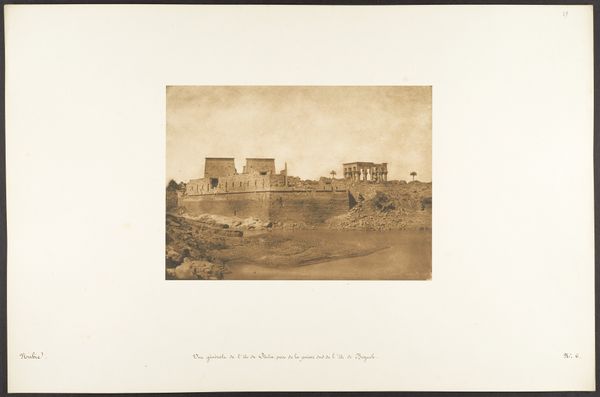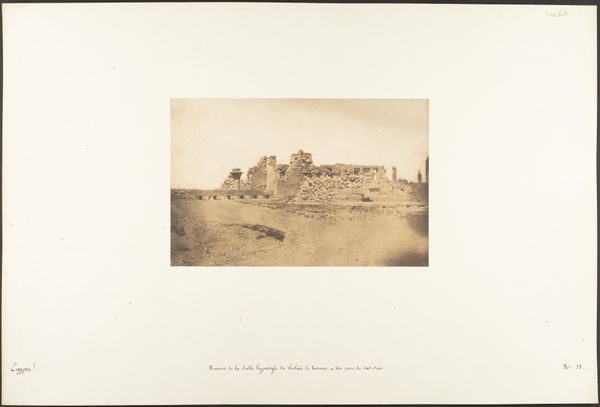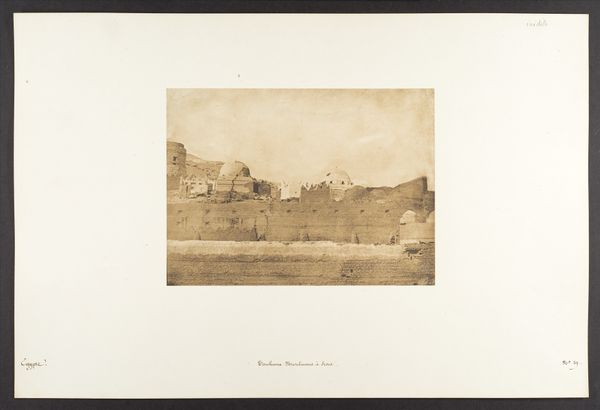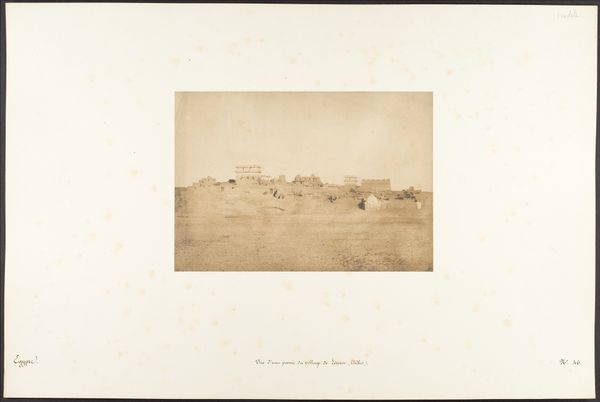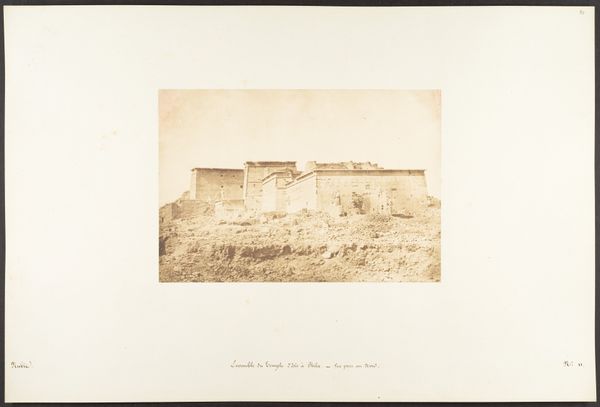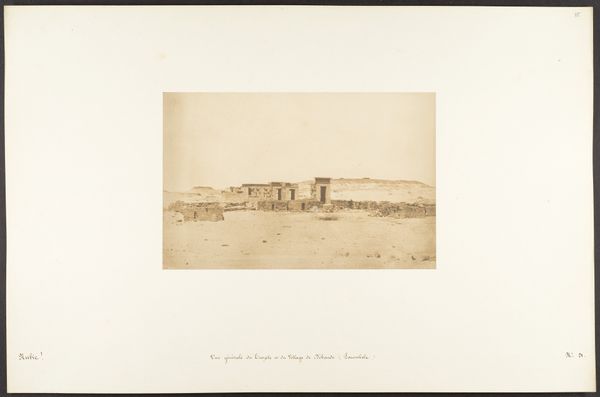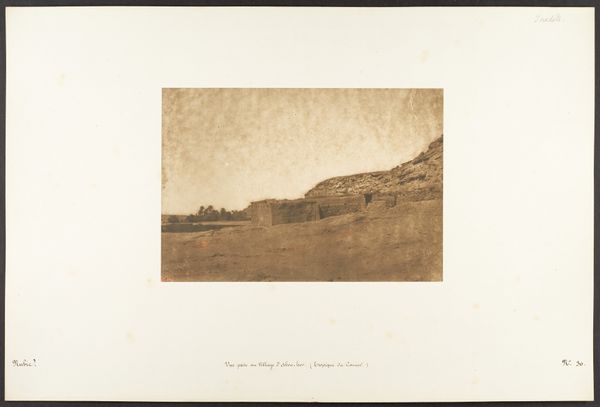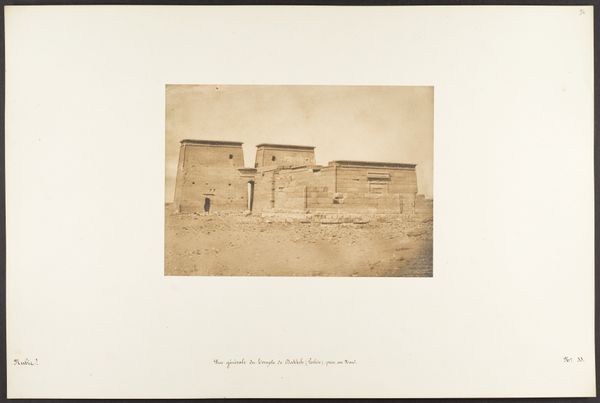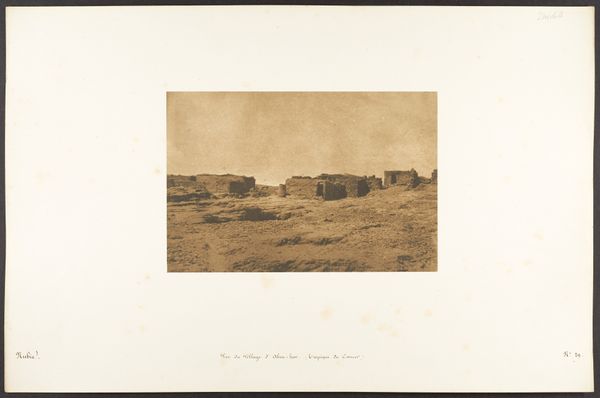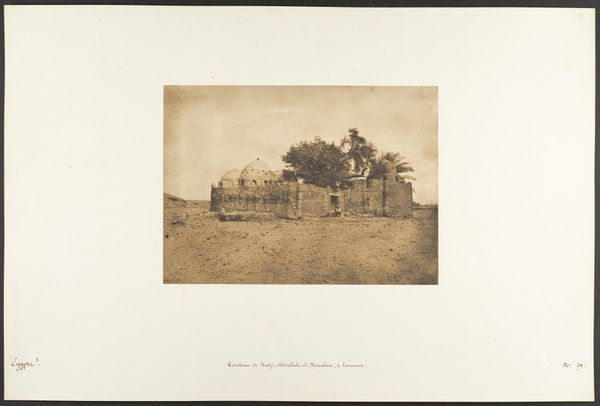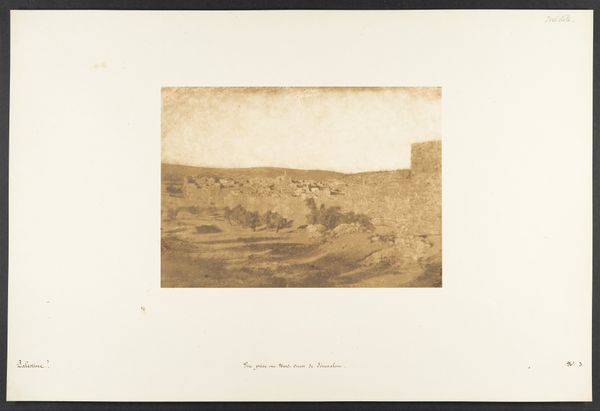
Vue des Pylones du Temple Khons et d'une partie du village de Karnac 1849 - 1850
0:00
0:00
photography, collotype, architecture
#
landscape
#
ancient-egyptian-art
#
photography
#
collotype
#
ancient-mediterranean
#
architecture
Dimensions: Image: 5 1/4 × 8 1/8 in. (13.4 × 20.6 cm) Mount: 12 5/16 × 18 11/16 in. (31.2 × 47.5 cm)
Copyright: Public Domain
"Vue des Pylônes du Temple Khons et d'une partie du village de Karnac" was created by Maxime Du Camp in the mid-19th century, using the then-new technology of photography. Du Camp, a French writer and photographer, made this image during a time of intense European interest in Egypt, fueled by colonial ambitions and archaeological discoveries. The photograph captures the imposing pylons of the Temple of Khons at Karnak. What does it mean for a European to capture such a photo? Think about the power dynamics at play – the photographer, a representative of a colonizing nation, documenting an ancient civilization. The sepia tones lend the image a sense of timelessness, yet it’s impossible to ignore the photographer’s role in shaping how the Western world perceived Egypt. The image invites us to reflect on how photography can both reveal and obscure, and how the act of seeing is always entangled with issues of power and representation.
Comments
No comments
Be the first to comment and join the conversation on the ultimate creative platform.

